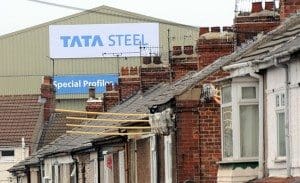Work has officially begun on Tata Steel’s electric arc furnace at its Port Talbot site, marking a pivotal moment in the future of UK steelmaking. The project, which is expected to cut the site’s carbon emissions by 90 per cent, has been enabled by a £500 million grant from the UK government—a key component of Labour’s early industrial strategy.
The new furnace will secure 5,000 jobs at Port Talbot and represents a major shift from traditional blast furnace operations to lower-carbon electric steelmaking. The funding, signed off just ten weeks after Labour entered government, is a cornerstone of the party’s Plan for Change and wider commitment to green industrial transformation.
The government’s support works out to approximately £100,000 in grant funding for each job retained, and is part of a broader £580 million support package that includes £80 million allocated to assist displaced workers and the wider South Wales community following earlier redundancies.
Tata Steel, which is investing a total of £1.25 billion into the new furnace project, had previously warned that its ageing blast furnaces were losing £1 million per day. The company shut its final blast furnace at Port Talbot in September, ending a 20th-century industrial legacy in South Wales. The closure resulted in around 2,800 job losses.
Unlike blast furnaces that produce virgin steel by extracting iron from ore using intense heat—releasing significant amounts of carbon—electric arc furnaces melt scrap steel, making them a more sustainable option aligned with the UK’s net zero ambitions.
Business Secretary Jonathan Reynolds heralded the launch of the furnace as a clear demonstration of Labour’s industrial strategy in motion.
“This government is committed to a bright future for our steel industry, which is why we provided £500 million of funding to make this project possible,” Reynolds said.
“Our modern industrial strategy has set out how we’ll back the sector even further, including by slashing energy costs for firms like Tata Steel to level the playing field.”
Labour is also preparing to launch a dedicated steel strategy, which will see up to £2.5 billion invested into rebuilding the UK’s steel industry.
The Port Talbot project comes at a time of significant uncertainty for the UK’s steel sector. In April, the government was forced to intervene in British Steel’s Scunthorpe operations, after owner Jingye threatened to suspend orders for essential raw materials. Without emergency action, the UK would have lost its final remaining virgin steel production facility—something that has not happened since the Industrial Revolution.
International trade tensions continue to affect the sector as well. While the UK secured an exemption from the Trump-era 50 per cent steel tariffs, it still faces a 25 per cent duty on exports to the United States—despite earlier drafts of the UK-US trade agreement suggesting these would be eliminated entirely. The government has said it remains committed to negotiating the removal of this tariff on both steel and aluminium.
With the electric arc furnace now under construction, Tata Steel’s transformation of Port Talbot sets a clear precedent for the UK’s industrial future: cleaner, leaner, and strategically supported by government investment.
Read more:
Tata Steel breaks ground on Port Talbot’s electric arc furnace with £500m in government backing
